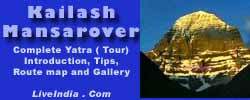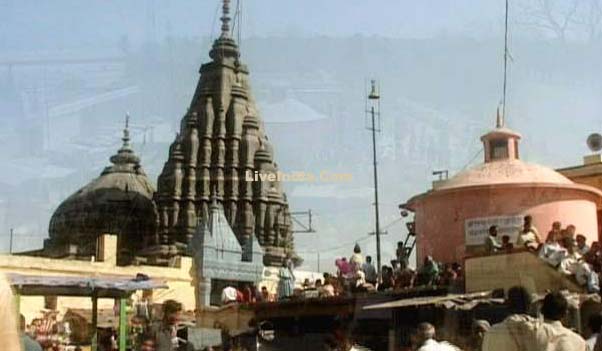 Gaya derives its name from the
mythological demon Gayasur (which literally means Gaya the holy demon),
demon (asur, a Sanskrit word) and Gaya. Over its history dating millennia,
the word asur got deleted and the name Gaya remained in currency. Lord
Vishnu killed Gayasur, the holy demon by using the pressure of his foot
over him. This incident transformed Gayasur into the series of rocky hills
that make up the landscape of the Gaya city. Gaya was so holy that he had
the power to absolve the sins of those who touched him or looked at him;
after his death many people have flocked to Gaya to perform shraddha sacrifices
on his body to absolve the sins of their ancestors. Gods and goddesses
had promised to live on Gayasur's body after he died, and the hilltop protuberances
of Gaya are surmounted by temples to various gods and goddesses. These
hilltop temples at Rama Shila, Mangla Gauri, Shringa Sthan and Brahmayoni
are part of the pilgrimage circuit, and grand staircases have been built
up to most of them
Gaya derives its name from the
mythological demon Gayasur (which literally means Gaya the holy demon),
demon (asur, a Sanskrit word) and Gaya. Over its history dating millennia,
the word asur got deleted and the name Gaya remained in currency. Lord
Vishnu killed Gayasur, the holy demon by using the pressure of his foot
over him. This incident transformed Gayasur into the series of rocky hills
that make up the landscape of the Gaya city. Gaya was so holy that he had
the power to absolve the sins of those who touched him or looked at him;
after his death many people have flocked to Gaya to perform shraddha sacrifices
on his body to absolve the sins of their ancestors. Gods and goddesses
had promised to live on Gayasur's body after he died, and the hilltop protuberances
of Gaya are surmounted by temples to various gods and goddesses. These
hilltop temples at Rama Shila, Mangla Gauri, Shringa Sthan and Brahmayoni
are part of the pilgrimage circuit, and grand staircases have been built
up to most of them |
|
|
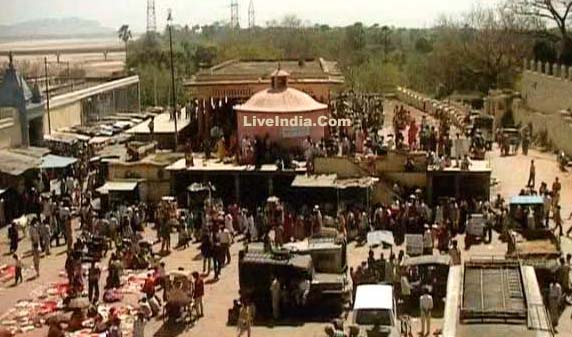
Sacred places in Gaya correspond
to physical features, most of which occur naturally. Ghats and temples
line the banks of the sacred Falgu River. Trees such as pipal trees and
Akshayavat, the undying banyan, are especially sacred. The Mangla Gauri
shrine is marked by two rounded stones that symbolize the breasts of the
mythological Sati, the first wife of Lord Shiva. The most popular temple
today is Vishnupad, a place along the Falgu River, marked by a footprint
of Vishnu incised into a block of basalt, that marks the act of Lord Vishnu
subduing Gayasur by placing his foot on Gayasur's chest. The present day
temple was rebuilt by Devi Ahilya Bai Holkar, the ruler of Indore, in the
18th century
|
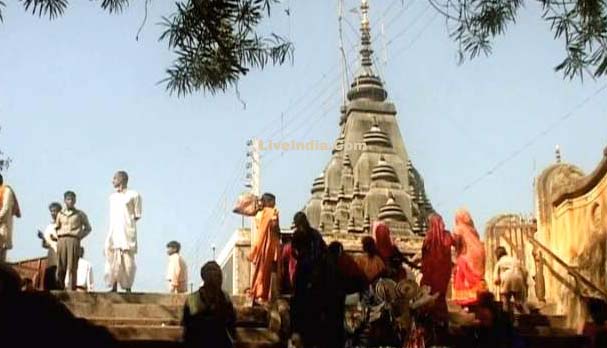
Gaya is significant to Hindus
from the point of view of salvation to the souls of ancestors (a ritual
called pindadanam). According to Ramayana, when Lord Rama came to Gaya
along with Sita for pitrupaksha (or to perform pindadanam), Sita cursed
the Falgu River following some disobedience on the part of the river. The
mythology states that on account of this curse, Falgu River lost its water,
and the river is simply a vast stretch of sand dunes.
|
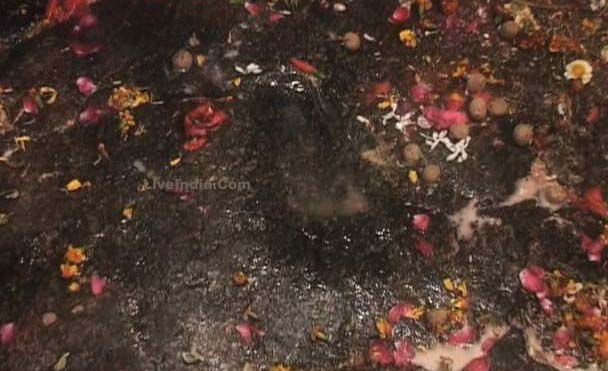
Vishnupad Temple located
in the central part of the old town is believed to have been built over
the footprints of Lord Vishnu. Inside the temple, the 40 cm long `footprint'
of Vishnu is imprinted in solid rock and surrounded by a silver plated
basin. This Shikhara style temple was constructed in 1787, by Queen Ahilya
Bai of Indore, on the banks of the river Falgu. Non-Hindus are not allowed
to enter the temple.
A flight of 1000 stone steps
leads to the top of the Brahmajuni Hill, 1 km south-west of the Vishnupad
Temple that affords a splendid view of the temple
|
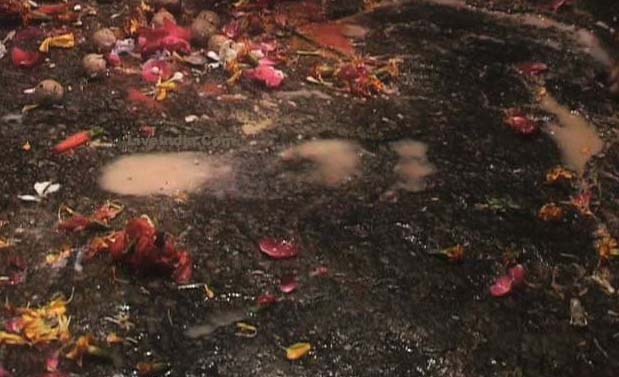
Lord vishnu's right footprint
is embedded on the stone called 'Dhrama shiela'. Pilgrims come here
for praying.
They worship with milk and
flower garlands so that their relatives soul have peace in eternal heaven.
Inside the temple, the 40
cm long `footprint' of Vishnu is imprinted in solid rock and surrounded
by a silver plated basin.
The temple is situated on
the banks of the Phalgu River, Gaya. The closest airport is located in
Patna, four hours north.
The Poorva Exp leaves Kolkata
(Calcutta) (Howrah Station) at 9.15 am (Wed, Thurs, Sun) and arrives in
Gaya at 3.50 pm. The night Doon Exp leaves Kolkata (Calcutta) at 8 pm,
reaches Gaya at 6 am, and then continues on to Haridwar.
Bus Buses to Patna (100km,
4 hr) and Ranchi (7 hr) depart from the Gandhi Maidan Bus Stand. Buses
to Rajgir (3 hr) depart from the Gaurakshini Bus Stand, across the river.
Buses to Rajgir and Nalanda (2 hr, every hour) depart from the Manpur bus
stand on the other side of the Phalgu River.
|
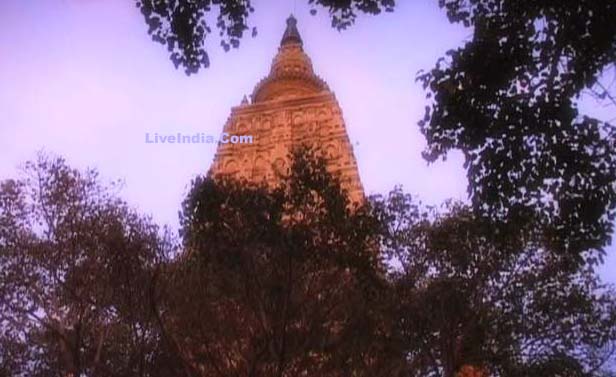
|
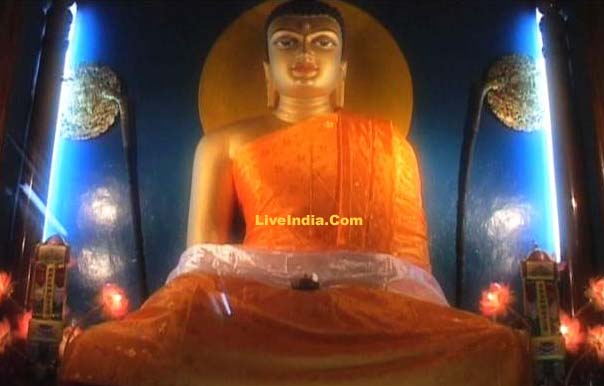
Documented history of Gaya
dates back to the birth of Gautam Buddha. About 15 km from Gaya town is
Bodh Gaya, the place where Gautam Buddha got enlightenment. Since then
the places around Gaya (Rajgir, Nalanda, Vaishali, Patliputra) had been
the citadel of knowledge for the ancient world. These centers of knowledge
further flourished under the rule of dynasties like the Mauryans who ruled
from Patliputra (modern Patna) and covered the area beyond the boundaries
of the Indian subcontinent. During this period, Gaya was a part of the
Magadh region.
|
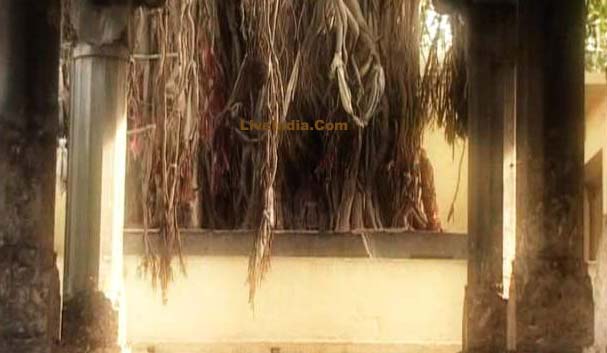
After discarding asceticism
and concentrating on meditation, Gautama discovered what Buddhists call
the Middle Way—a path of moderation away from the extremes of self-indulgence
and self-mortification. He accepted a little rice pudding from a village
girl named Sujata. Then, sitting under a pipal tree, now known as the Bodhi
tree in Bodh Gaya, he vowed never to arise until he had found the Truth.
At the age of 35, he attained Enlightenment; according to some traditions,
this occurred approximately in May, and according to others in December.
Gautama, from then on, was known as "The Perfectly Self-Awakened One",
the Samyaksambuddha

|
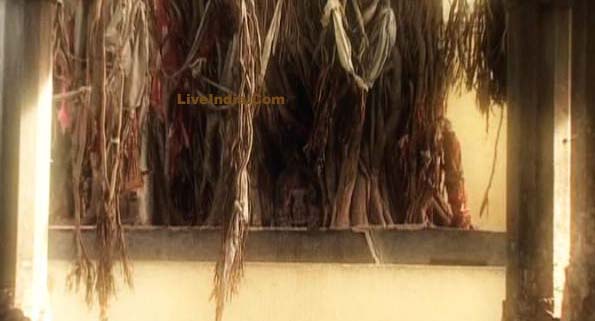
The Bodhi tree was a large
and very old specimen of the Sacred Fig, located at the Mahabodhi Temple
at Bodh Gaya (about 100 km from Patna in the Indian state of Bihar) under
which Siddhartha Gautama, the spiritual teacher and founder of Buddhism
later know as Gautama Buddha, arrived at Bodhi. The Bodhi Tree belongs
to the Sacred Figs (Ficus religiosa), also known as Bo, Pipul (Peepal)
or Ashwattha trees, which are sacred to Hindus, Jains and Buddhists. According
to Buddhist belief, Siddharta Gautama meditated under this tree, mentioned
as Ashwattha in the Tipitaka, when he achieved Nirvana. The word 'Ashvattha'
is derived from the Sanskrit roots 'Shwa' meaning tomorrow, 'a' indicating
negation, and 'tha' meaning "one that stands or remains". (The Hindu philosopher
Shankaracharya interprets the name to indicate "One which does not remain
the same tomorrow", such as the universe itself.)
The Sacred Fig currently
growing at the Mahabodhi Temple is not the original specimen, but probably
a direct clone descendant of it. This tree is a frequent destination for
pilgrims, being the most important of the four holy sites for Buddhists.
Another sacred specimen, also propagated from the original Bodhi tree,
is the Sri Maha Bodhi in Sri Lanka, planted in 288 BC, making it the oldest
verified specimen of any angiosperm.
In religious iconography,
the Bodhi tree is easily recognizable from its heart-shaped leaves, which
are usually prominently displayed.
|
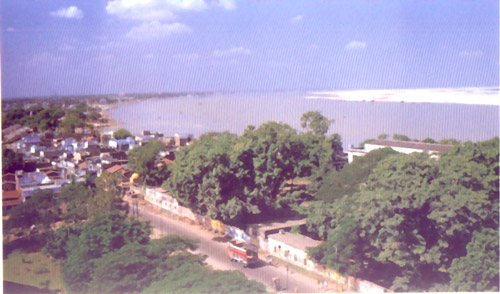
Medieval history
After the attack of the
Muslim rulers these centers were severely damaged and along with them the
historical city of Gaya lost its glory. But, in the medieval era under
the rule of the great Sher Shah Suri (an Afghan ruler based in the Sasaram
district of modern Bihar), Gaya got connected with the rest of India by
the famous Grand Trunk road (passing through Sherghati) built by the ruler.
|
Roadways
The Grand Trunk Road (NH-2,
which is undergoing a revival under The Golden Quadrilateral project) is
about 30 km. from Gaya city. Thus, Gaya is well connected to Kolkata, Varanasi,
Allahabad, Kanpur, Delhi, Amritsar, and to the Pakistani cities of Lahore
and Peshawar. Although the highway connecting Gaya to Patna is not in a
good condition, the railway services between the two stations is up to
the mark.
[edit]
Railways
Gaya is the second most
important station in Bihar after Patna. It is a junction and is connected
to the three of the four metropolis New Delhi, Kolkata and Mumbai through
Important Broad Guage Routes (direct trains), including the Grand Chord
line. There is a direct non-stop train, the Mahabodhi Express from New
Delhi to Gaya daily. It takes around 16 hours to reach Gaya from New Delhi
through train.
There are direct trains from
Gaya to other important stations in India like Ranchi, Varanasi, Lucknow,
Kanpur, Allahabad, Agra, Mathura, Jabalpur, Bhopal, Indore, Nagpur, Puri,
etc. There are also two smaller train lines from Gaya, one to Patna and
the other to Kiul.
[edit]
Airways
Gaya has the only international
airport in Bihar and Jharkhand taken together. It is a small international
airport connected to Colombo and Bangkok.
|








